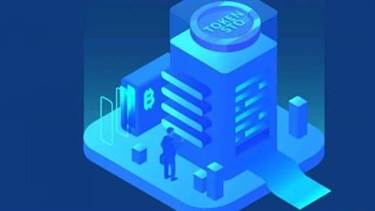Difference Between Website And Web Application Web App
Содержание
Websites are one-way informational feeds, they do not allow viewers to interact or communicate back to the site. Mobile websites are designed specifically for smaller touch screens, and responsive design websites automatically adjust to the size and type of browser in which they are being displayed. A website is a group of globally accessible, interlinked web pages which have a single domain name. The web app may not support multiple browsers with equal precedence.

We know what to look for and gather information to develop the best solution to build your web application. Web applications gained popularity as a result of the Software as a Service trend. They are capable of so much more than just informing, and they can even stand alone as a service. Most web applications have a free model where users can try it out with limited features or for a limited time, and if the service is good, they can switch to premium. A website is a collection of content that a web server makes accessible and may be viewed using a web browser. It often consists of many web pages that are identifiable by a single domain name.
That’s because the former are web apps and the latter is a website. However, web apps operate on any device in a mode that is distinctly different than that of a traditional website. Both are important, but knowing the difference will help you understand what web app development is as well as whether or not it sounds like a good idea for your business.
From a user perspective, local and web apps can look and work much the same. A developer may focus on local apps if they want to create a user-centric tool. They may wish to focus on creating a web app if their app’s functionality is application-specific. Many developers create both local and web apps to widen the reach of their products and offer the best user experience.
What’s The Difference Between A Web App And A Wesbite?
A local app is compatible with a device’s hardware and built-in features, such as an accelerometer, camera, and more. This way, a developer can incorporate these features into an app. Users download these apps from an app store or online marketplaces such as the Apple App Store or the Google Play Store.
- Mobile apps are easier to use, and nowadays, they have gained a lot of popularity and is being used by many users where it has portability and can be used at any time.
- And the web application can be a great and low-cost platform for this, allowing you to gather and retain all required data while also presenting the results to users.
- We have focused our business less on web design, and more on data-driven software development.
- Next comes planning, designing, developing, testing, and deploying the app to mobile devices.
- Still, once an app is set up, the app store takes care of revenue and commissions.
That said, weighing the cons of web application development against the pros is still useful for getting the kinks ironed out. A concept like web apps should be alluring in itself because of its cross-platform capabilities. For example, you’ll notice that using Twitter or Facebook from a web browser is a more captivating experience than clicking onto the website of your local pizzeria.
Prototype Your Web App
Unlike a website, a web application is mainly targeted at getting a particular function done, such as making a reservation, paying, editing a document, etc. Essential Designs is a team of custom application web application structure developers in Vancouver, Calgary and Toronto. Websites, accessible through browsers, display useful content. They are navigable and can present digital content, images, video, and audio.

The most important qualities of a good website are superiority and relevant web content. A bespoke web application, on the other hand, is specially created for your business’s requirements. Therefore, it is fully flexible and scalable to match the needs and expansion of your business. And the essential characteristics of a successful web application are that it is cloud-hosted and highly scalable. Progressive web apps are simply web apps and not native apps. Apps that identify themselves as progressive are usually more modern and built to work across platforms, however.
This is a shame because that means if you want the best of both worlds, you’ll always need at least twice as many developers or at least twice as much talent. If you need to create a web application, contact Treinetic, your trusted web application development partner. We have experience working with many foreign companies providing solutions for their customers.
Why You Need A Web Application?
Here’s a simplified rundown on the difference between a Website versus Web App. Mobile Apps are easy to use, compatible with a number of devices, easily upgradable, easily be shareable or downloadable, whereas Websites are not that easier to use as mobile apps are. The app development process for local apps and web apps is different. Some aspects of each are easier for developers, but each also has its drawbacks. A web app is an internet-enabled app that is accessible from the mobile device’s web browser. Users don’t have to download a web app to their mobile device.

Ryan Perian is a certified IT specialist who holds numerous IT certifications and has 12+ years’ experience working in the IT industry support and management positions. In fact, it’s probably the case that you’re already very much in the know about several prominent web apps that are in frequent use across the web. Web servers of note include Apache, Nginx, and Internet Information Services .
Think about what your web app will consist of and how to meet those requirements using your resources and budget. On the bright side, server-side web apps are normally more secure and offer more browser compatibility than client-side web apps. As a result of client-side rendering, there is little to no buffering time for loading a page. This speeds up interactions with content, making the page markedly responsive. Any data or business logic that the app might use to function is dynamically loaded at start-up. Or in the case of PWAs, the download and installation won’t be the equivalent of the app actually taking up space on your device.
Characteristics Of Web Application
So, users can engage with your business through web apps such as shopping carts or content management systems. The website vs. web application debate is pervasive in the IT industry, and for a good reason. Both need an internet connection, and in 2021, most of the websites are responsive, and some of the web applications are also trying to support mobile responsiveness.
Mobile Apps are easier to maintain, whereas Websites are a bit different to maintain and support their change releases. Due to various versions, users may have trouble communicating with other users of the app. Managing customer expectations is an important part of keeping customers satisfied. Keep reading to learn five strategies to manage customer expectations. Via Google Docs, users can interact directly with the web app by editing and making suggestions on documents. To do this, validate your prototype by presenting your web app to potential users.
And this should happen before you release your app to the public. Front-end and back-endframeworks and technologies can competently fulfill the requirements of your project. A workflow can establish a means of systematic organization for the various aspects of your web application development.
It’s easy to monetize web apps through advertisements, membership fees, and other promotions. Web apps are easier to maintain because these apps have a common code base across multiple mobile platforms. However, maintaining apps across multiple platforms presents challenges. Web apps are built using a combination of front-end and back-end technologies, and this alongside the software development process itself does not veer far from standard web development. Despite all the praise, web apps cannot replace mobile apps and will operate a bit slower than an application that is hosted on a local server.
Web Apps
A web application is a tool that opens up a world of possibilities for you. For example, your business must share information and complete transactions with their target customers. And the web application can be a great and low-cost platform for this, allowing you to gather and retain all required data while also presenting the results to users.
A web application is a software or program which is accessible using any web browser. Its frontend is usually created using languages like HTML, CSS, Javascript, which are supported by major browsers. While the backend could use any programming stack like LAMP, MEAN, etc. Unlike mobile apps, there is no specific SDK for developing web applications.
Of course, a pro and con list would be futile if there were only pros. Traditional websites may have users who scroll or click to consume more information, or they may even enter an email address or perhaps more personal information for an online purchase. Web apps are designed to be interactive whereas a website’s primary purpose is to present information.
Difference Between Website And Web Application Web App
Web apps access a limited amount of a device’s built-in features. Still, having a PWA means going through the classic download and install process that users expect with mobile apps. But this is a good thing as PWAs can always be readily available from the user’s device.
Disadvantages Of Web Apps
Native technology will always carry an advantage over non-native technologies. Since web apps aren’t native, they don’t have the same capacity to collaborate effectively with the hardware and operating system of your specific device. Mobile app to be featured on both the Apple App Store and Google Play Store, then that will require two distinct apps if you decide to go native. Progressive web apps launch from a user’s device without the need to open a web browser first and they can send push notifications directly to your mobile device. A web application is a software or a program that runs in a browser and offers a particular service to the user through an interface. For example, Google Docs, which is one of the most popular and used web applications today.
Adjust accordingly for the time frame in which you want your web app development to be completed. Create algorithms that will meticulously move your development forward. Defining the problem you wish to solve or identifying exactly why you want consumers to use your web app is the first step in developing your web application. Is the go-to query language for the common web developer. SQL has many extensions or related versions extending additional functionality like MySQL, PostgreSQL, and Oracle.
Therefore, you don’t require to download or install them. You can either make use of the computer or your mobile device to access the required data. Many developers opt to work with both types of apps to widen the reach of their products and offer the best possible user experience. A great team and well-defined procedures are nearly always what drive successful development. Basic functionality like scrolling bars and clickable buttons are all the spawn of JavaScript programming. A single-page application differs from a traditional multi-page application where new pages load only when you click a link.
JavaScript frameworks like React, Vue.js, and Angular use dynamic routing to fetch only the data that is necessary at any given time. Though server-side applications by and large still display content and/or UIs, the most dynamic of code resides in the web server. Generally, web apps need internet access to perform well or in most cases, to perform at all. Though PWAs do deter from this typecast, the most interactive of web apps will not respond if you don’t have a web connection.
Your development budget is a factor, as is how you want to monetize the app in the future and what mobile platforms you want to support. Mobile device manufacturers may lay restrictions on integrating services with mobile ad platforms and networks. Still, once an app is set up, the app store takes care of revenue and commissions. Developers want users to like their apps, and hope users find their apps helpful and easy to use. For the most part, both local apps and web apps are easy for users to access and use. Still, each has its pros and cons as far as what a user may prefer.
